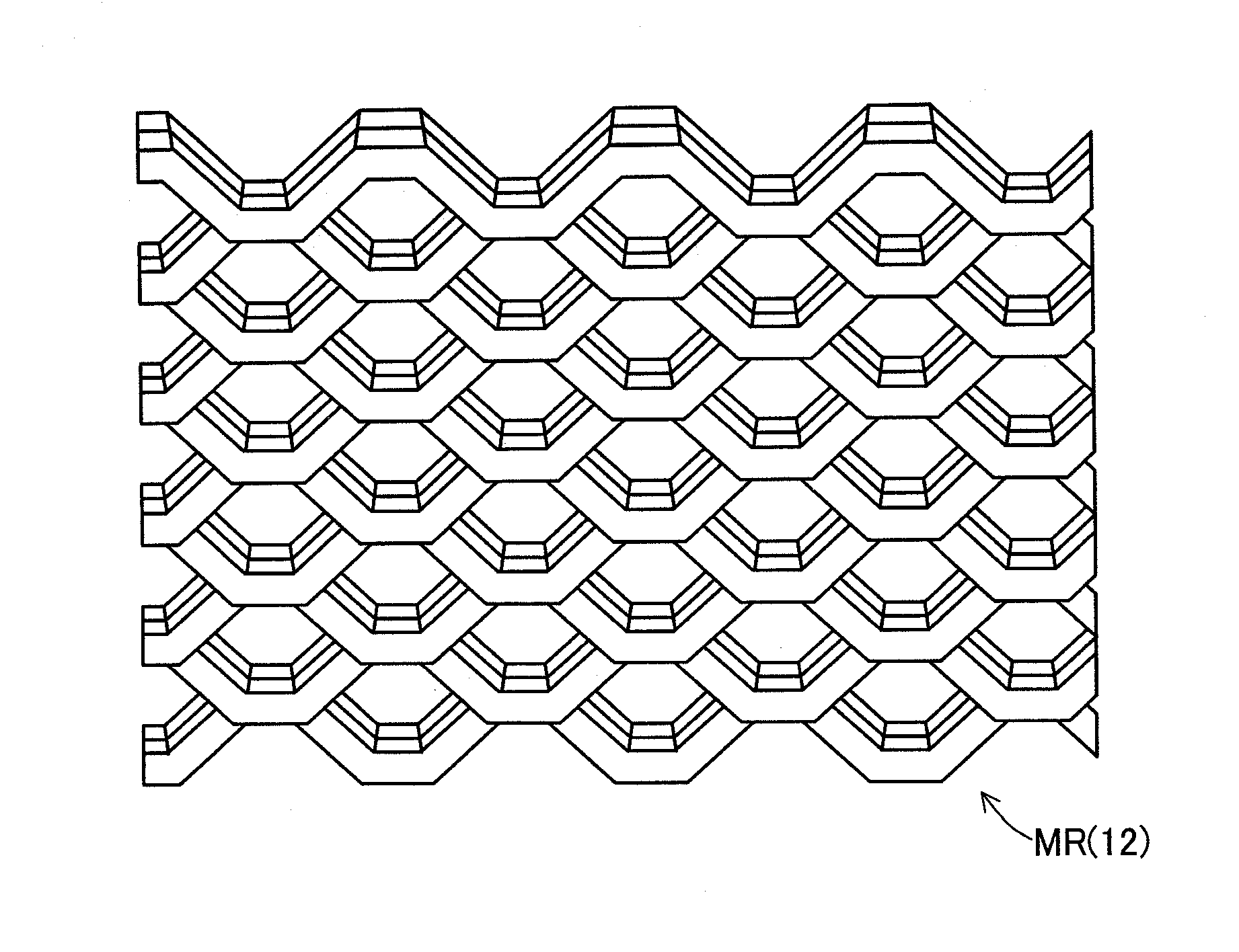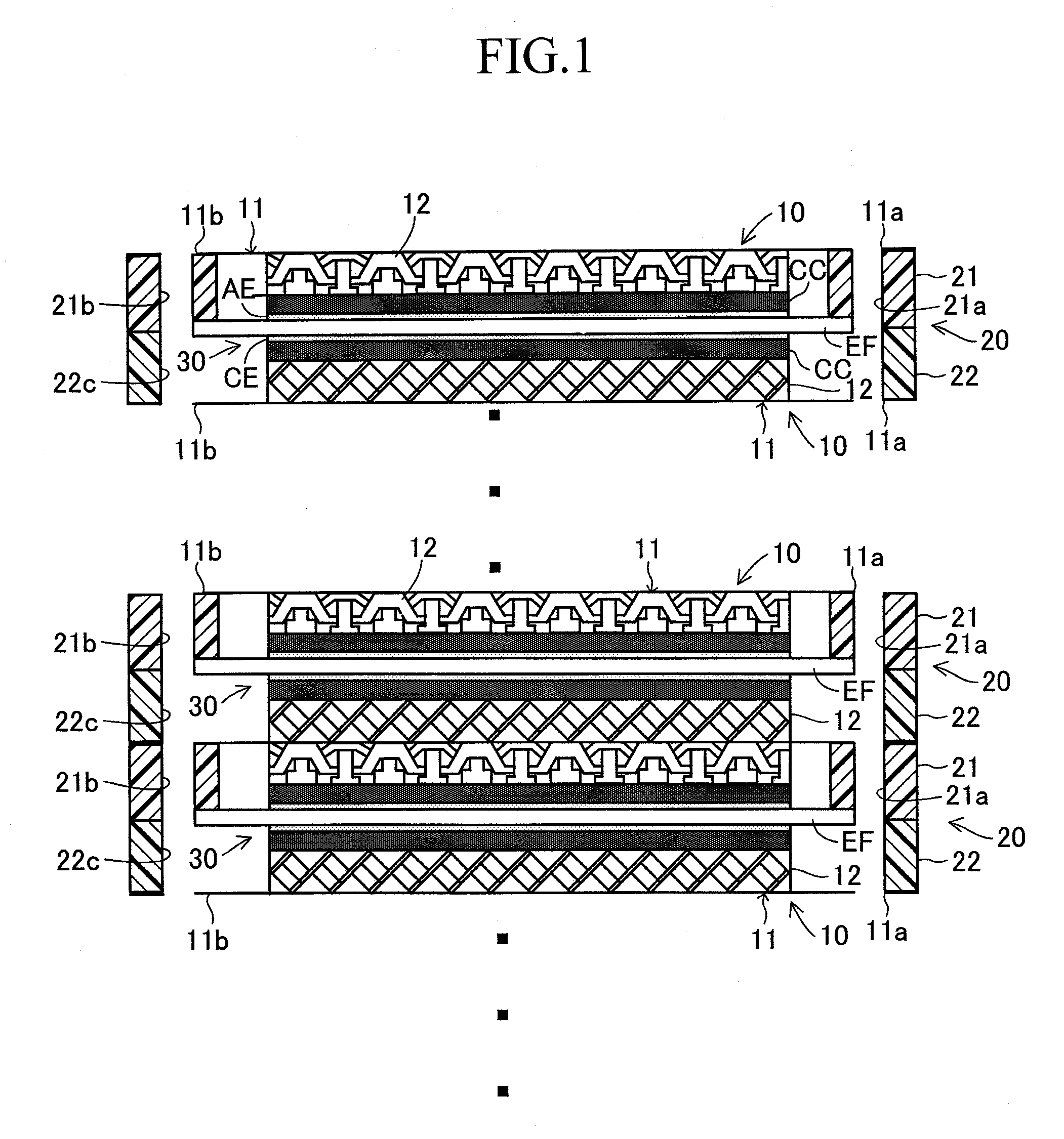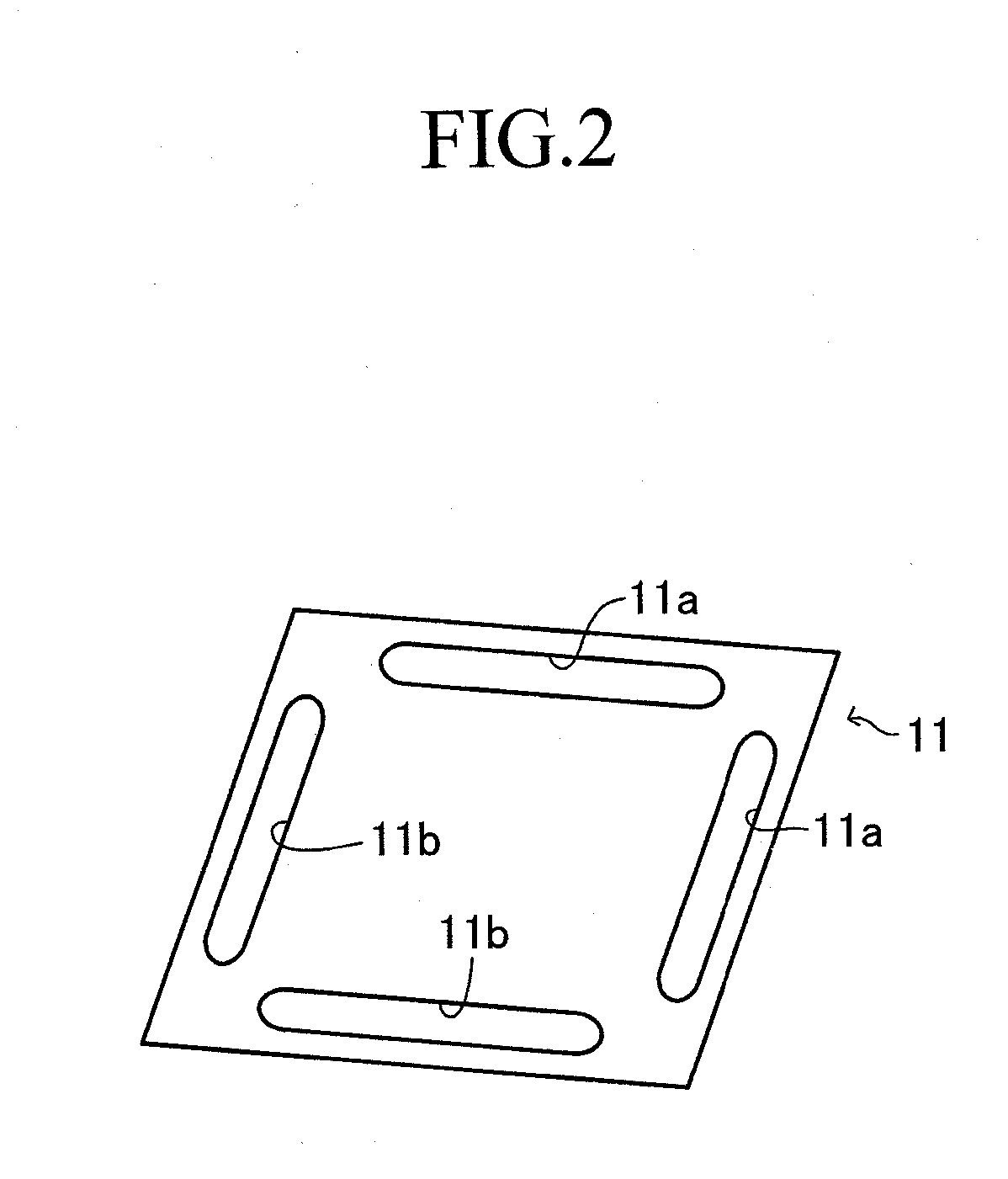Method of forming gas diffusion layer for fuel cell
a technology of gas diffusion layer and fuel cell, which is applied in the manufacture of cell components, final product manufacturing, electrochemical generators, etc., can solve the problems of reducing the size unable to supply air and fuel gas to the respective electrode layers of the fuel cell, and the shape of the cutting die is unlikely to be transferred to the metal sheet, etc., to achieve accurate through hole formation, efficient output, and low pressure loss associated with air or fuel gas flow through the hole
- Summary
- Abstract
- Description
- Claims
- Application Information
AI Technical Summary
Benefits of technology
Problems solved by technology
Method used
Image
Examples
first embodiment
[0023]Embodiments of the present invention will next be described in detail with reference to the drawings. FIG. 1 relates to the present invention, and schematically shows a portion of a polymer electrolyte fuel cell stack which uses separators 10 for a fuel cell (hereinafter, referred to merely as the separators 10). This fuel cell stack is a stack of cells. A single cell includes two separators 10, a frame 20, and an MEA (Membrane-Electrode Assembly) 30. The frame 20 and the MEA 30 are sandwiched between the separators 10. When fuel gas such as hydrogen gas, and oxidizer gas such as air are introduced to the cells from the exterior of the fuel cell stack, electrode reactions occur in the MEAs 30, thereby generating electricity. Hereinafter, fuel gas and oxidizer gas may be collectively referred to as gas. Oxidizer gas may contain water mist for removing heat generated in association with electrode reactions in the MEAs 30 and for maintaining appropriate water content in the MEAs ...
second embodiment
[0054]After the upper blade UH is returned to the original position (in this case, the first machining position), the upper blade UH is moved in a direction opposite that of the preceding movement thereof along the width direction of the stainless steel sheet S; i.e., in this case, from the first machining position to the second machining position, whereat the execution of the third step is completed. Subsequently, while the upper blade UH is positioned at the second machining position, the first step is executed. That is, the first step to be executed after the third step is such that, while the upper blade UH is positioned at the second machining position, the machining cycle is executed two times. The second step to be executed after this first step is such that, while the upper blade UH is positioned at the first machining position, the machining cycle is executed two times. In this case, the third step is such that, while the upper blade UH is positioned at the second machining...
PUM
| Property | Measurement | Unit |
|---|---|---|
| Thickness | aaaaa | aaaaa |
| Width | aaaaa | aaaaa |
Abstract
Description
Claims
Application Information
 Login to View More
Login to View More - R&D
- Intellectual Property
- Life Sciences
- Materials
- Tech Scout
- Unparalleled Data Quality
- Higher Quality Content
- 60% Fewer Hallucinations
Browse by: Latest US Patents, China's latest patents, Technical Efficacy Thesaurus, Application Domain, Technology Topic, Popular Technical Reports.
© 2025 PatSnap. All rights reserved.Legal|Privacy policy|Modern Slavery Act Transparency Statement|Sitemap|About US| Contact US: help@patsnap.com



